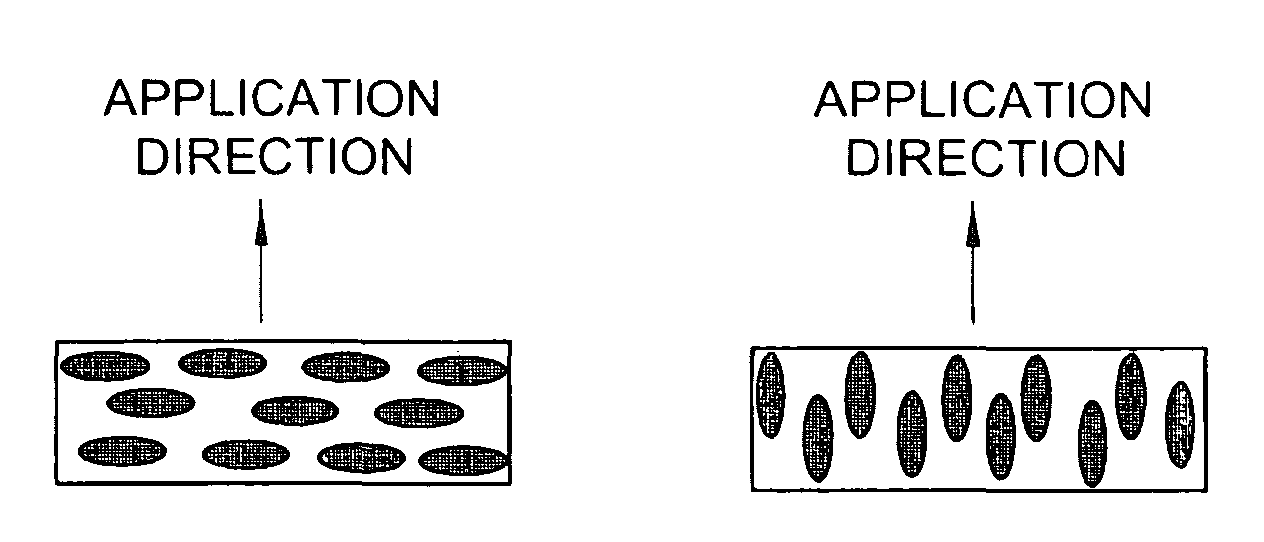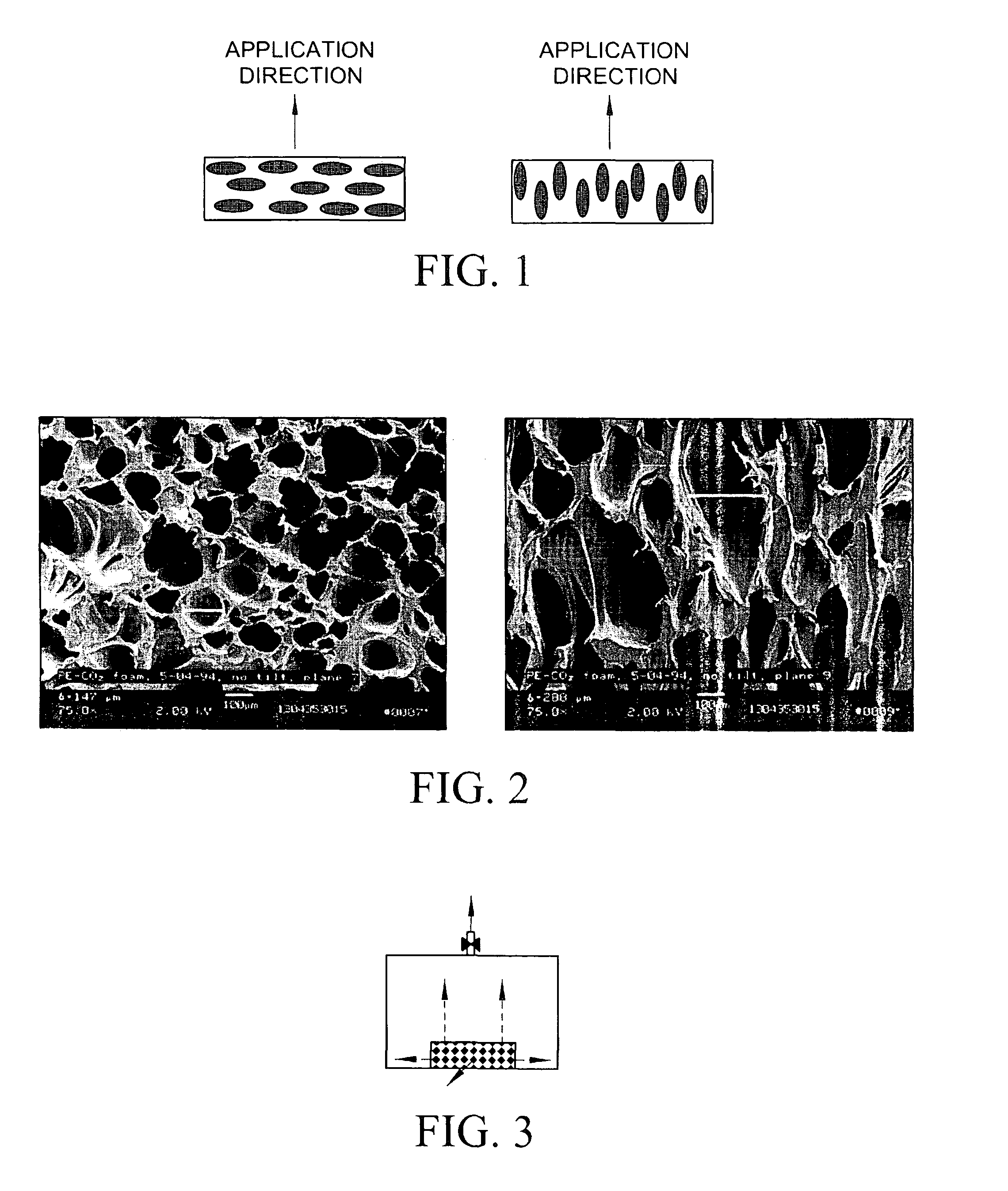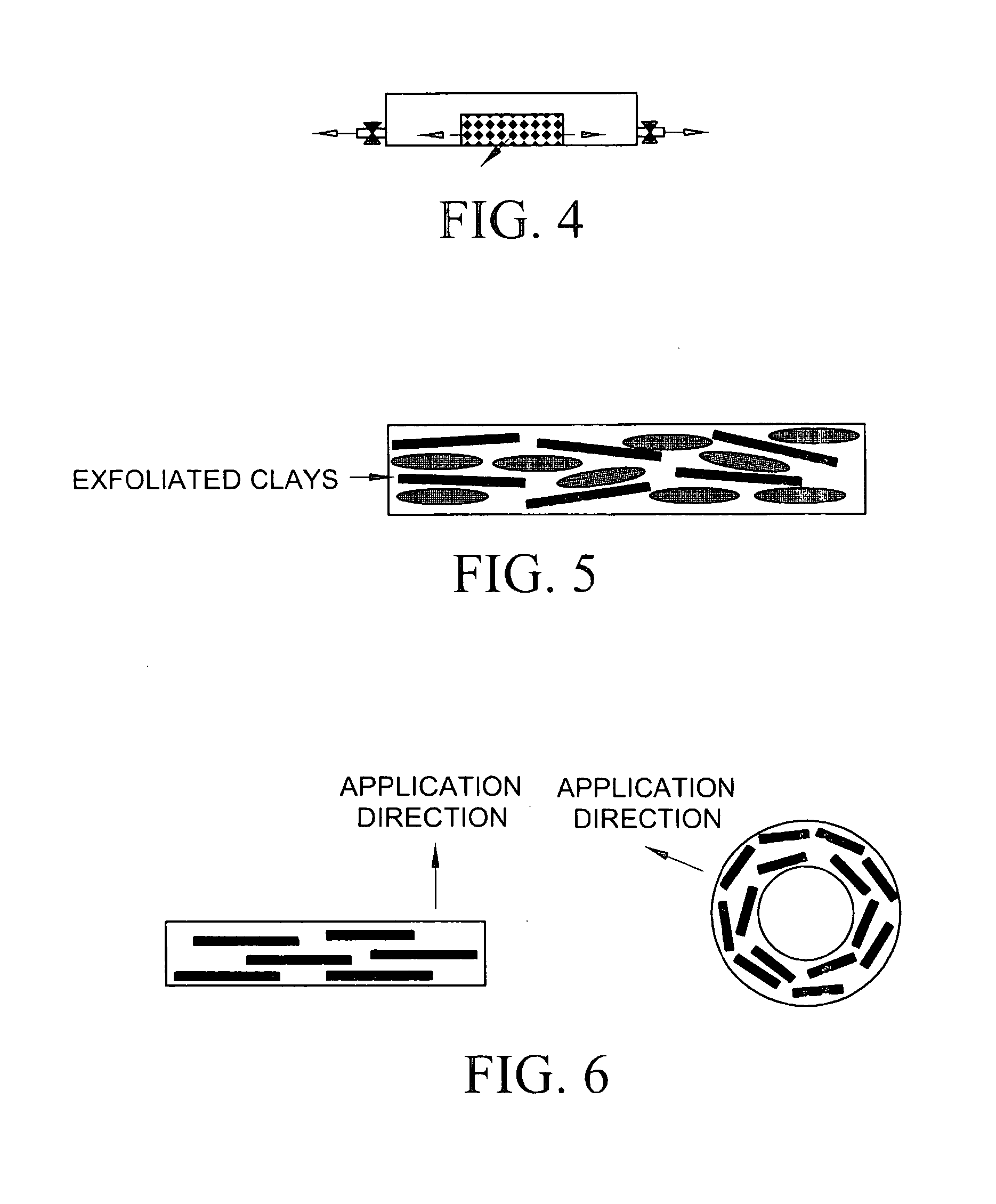Superinsulation with nanopores
a nano-pore, super-insulation technology, applied in the field of super-insulation with nano-pores, can solve the problems of compromising insulation strength and performance, new materials failing to reach the market, processing difficulties, etc., and achieves high porosity, high porosity material, and high processing cost
- Summary
- Abstract
- Description
- Claims
- Application Information
AI Technical Summary
Benefits of technology
Problems solved by technology
Method used
Image
Examples
example 1
Oriented Prolate Pores Reducing the Thermal K by 10-15%
[0055]Through pressurized vessel'experiments, foams with anisotropical pore structure have been produced. FIG. 2 shows the SEM pictures of the cell structure along two different directions.
[0056]The particular sample shown in FIG. 2 was produced in a pressurized vessel with a sudden release of pressure by opening a valve at the top of the vessel. This setup, as shown in FIG. 3, provided a favorable direction of foam expansion (towards the top of the vessel), thereby creating anisotropic expansion ratios of the foam (higher expansion ratio to the top than to the sides). The difference in expansion ratios led to prolate (needle-like) cell structure shown by the TEM pictures above. The sample density was 0.023 gram / cc. Thermal conductivities measured along two directions (long polar axis and the short equator axes) were 37 and 33 mW / M·° K, respectively. The 12% reduction in thermal conductivity agreed well with our modeling results...
example 2
Oriented Oblate Pores Reducing the Thermal K by 30%
[0058]Our modeling results indicated a more significant improvement in insulation for the oblate geometry (short polar axis and long equator axes, i.e. disk-like) cell structure aligned normal to the heat flow direction. The thermal conductivity of a similar density to the above prolate example could be reduced down to 24 mW / M·° K, which would be even lower than the thermal K of current foam containing low thermal K gas such as HCFC. Such (oblate) cell structure could be created by a batch foaming process with restriction of expansion in the polar direction and free expansion in equator's directions as shown in FIG. 4.
example 3
Using Exfoliated Clay to Facilitate Asymmetrical Pore Formations
[0059]While these two innovations lowered the risks of making large number of nanopores by a foaming process, the technical burden is shifted to the control of pores' geometry as well as their orientation during foaming. This invention includes specific material nanotechnology to facilitate the growth and orientation of spheroid pores. One method is the use of a polymer-clay composite with exfoliated clay layers as template for gas bubble formation. Clay molecules, after full exfoliation, have platelet structure with aspect ratio above 1000. By modifying the surface of a clay platelet, homogeneous nucleation can be enhanced within the galleries of neighboring platelet molecules and increases the formation of oblate pores as shown in FIG. 5. These highly anisotropic plate molecules (aspect ratio from 40 up to 1000) will be oriented under volume exclusion effect, or by the shear force of the extrusion to the preferred dir...
PUM
| Property | Measurement | Unit |
|---|---|---|
| pore size | aaaaa | aaaaa |
| porosity | aaaaa | aaaaa |
| size | aaaaa | aaaaa |
Abstract
Description
Claims
Application Information
 Login to View More
Login to View More - R&D
- Intellectual Property
- Life Sciences
- Materials
- Tech Scout
- Unparalleled Data Quality
- Higher Quality Content
- 60% Fewer Hallucinations
Browse by: Latest US Patents, China's latest patents, Technical Efficacy Thesaurus, Application Domain, Technology Topic, Popular Technical Reports.
© 2025 PatSnap. All rights reserved.Legal|Privacy policy|Modern Slavery Act Transparency Statement|Sitemap|About US| Contact US: help@patsnap.com



